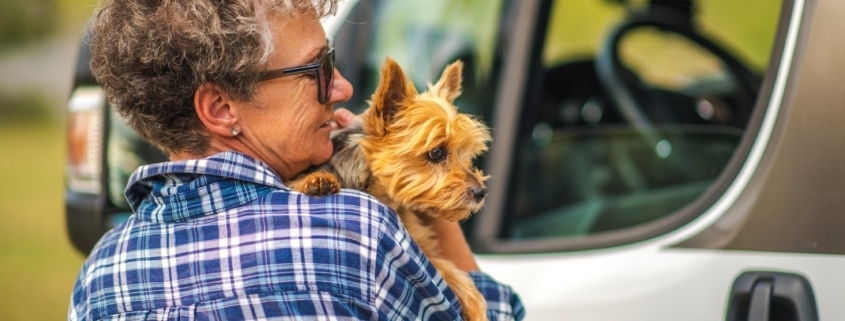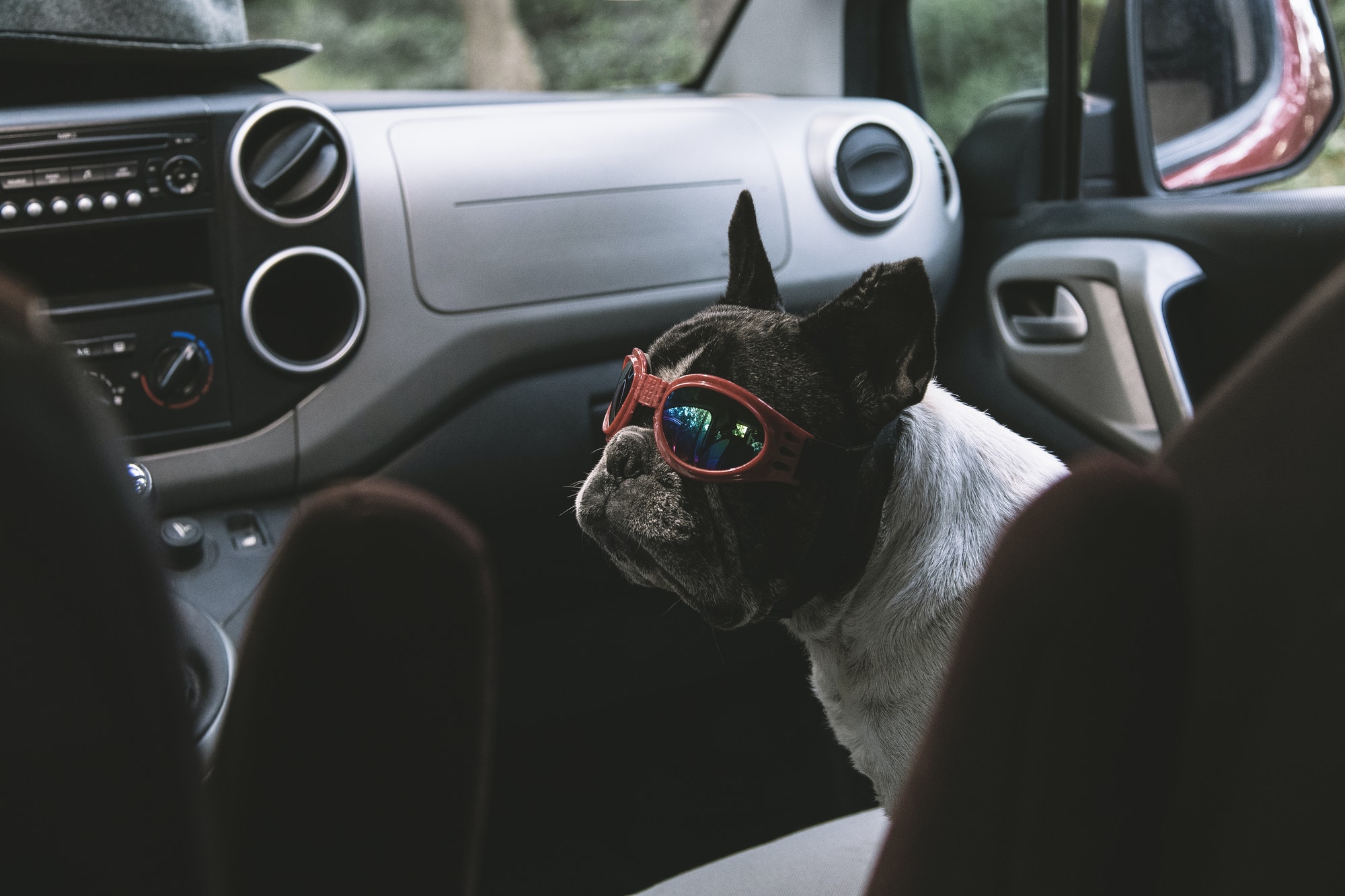Tips for Road Trips with Dogs
Dogs are great companions. That’s why more than 84% of pet owners travel by car with their pets. Especially around the holidays, dogs, along with presents and luggage, get loaded into cars. Just like road trips with kids, a successful long drive with your four-pawed family member takes careful planning.
Here are some tips on how to have fun and keep your dog safe on a road trip.
Before your travel
If you have not already, make sure your dog feels comfortable in your car. Puppies often suffer from motion sickness. To alleviate this, acclimate your pup to car rides, and not just to the veterinarian, a visit often associated with shots and the anxiety of being left overnight without you.
Good destinations that get tails wagging: your local park for ball playing and walks as well as visits to friends—yours and your dog’s. Also, to minimize the chance of motion sickness, do not feed your dog for two hours before a car trip.
Make sure your dog can handle city noises, especially if you live in a relatively quiet suburban cul-de-sac. Drive your dog downtown for a walk along crowded sidewalks edged with traffic. Your pet needs to become acclimated to rumbling buses, screeching brakes and blasting horns.
In case your dog gets spooked by these unfamiliar sounds and runs from you, protect her from getting permanently separated from you. Your dog should wear r a collar or tag—or both—with your name and cell phone number (not your home phone). That way the good Samaritan who finds your dog, can reach you right away.
In the Car
Let your dog ride in the backseat to avoid air bag injuries. Place small dogs in a dog carrier or crate. For larger dogs, use a pet safety harness (these often attach to seat belts) so that she’s not thrown forward if you stop quickly.
Carry water and a bowl. Dogs get thirsty too. Don’t let your furry friend stick her head out the car window. Yes, it looks like fun, but no, this isn’t safe. Dirt, pebbles and other debris can lodge in your pet’s eyes, not to mention what damage close encounters with nearby vehicles could do.
Bring along a dog emergency medical kit. You can purchase these or save money by creating your own. The items included are basically the same as in any medical kit—bandages, thermometer, antiseptic ointment, etc.– except the dog versions include an extra water bowl and a reflective leash, handy to have at night or if your lead snaps.
Never leave your pooch alone in the car. It creates too much anxiety. In cold weather, the car temperature can drop to uncomfortable levels and in warm weather, temperatures can rise to dangerous levels even with the windows cracked.
On the Road
Stop every two or three hours so you and your dog can stretch your legs. Your pet likely needs to use the outdoor “facilities” too. Some rest stops and highway gas stations feature dog-walking areas.
Be patient. Dogs accustomed to their neighborhood routes with their favorite grassy patches may require longer than typical walks along city sidewalks before feeling relaxed enough to do what they need to.
What do you do if traveling alone with your dog and you need to find a facility? Plan ahead. Avoid locking your pet in the car while you use the interstate’s rest room. Again, your pet can suffer from cold or hot temperatures, anxiety or even be stolen. Instead, follow the signs to a nearby gas station that has a bathroom accessed from the outside and take your dog with you. It’ll be a tight squeeze, but best for both of you.


 BellaOnline.com
BellaOnline.com
 BellaOnline.com
BellaOnline.com BellaOnline.com
BellaOnline.com
 Dentist's Money Digest
Dentist's Money Digest BellaOnline.com
BellaOnline.com